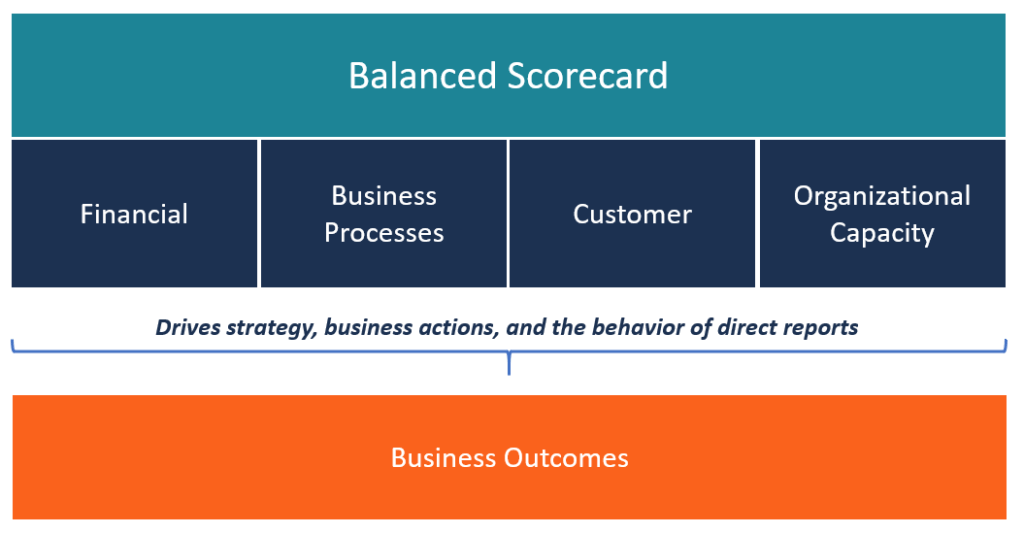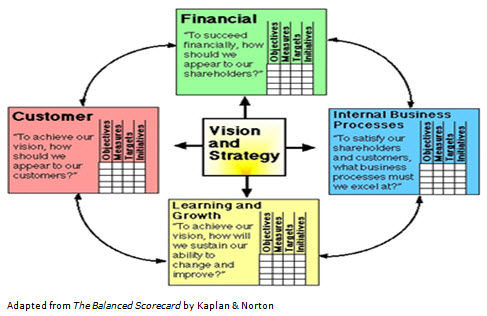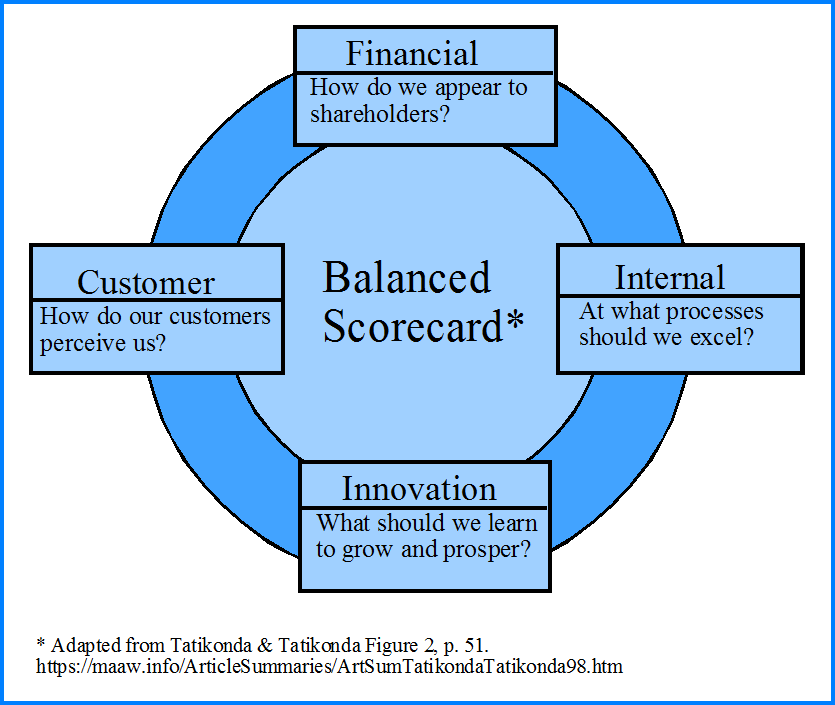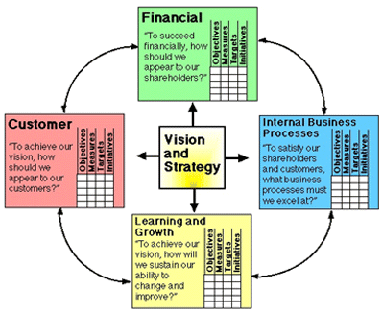It recognises that organisations are responsible to different stakeholder groups such as employees suppliers customers community and shareholders. Specific reasons that a company would use a Balanced Scorecard might include.

Balanced Scorecard Overview Four Perspectives
Was first published in 1992 by Kaplan and Norton a book followed in 1996.

. Communicate what they are trying to accomplish. The top-level strategy can be cascaded to the lower levels. Create goal-based budgeting tracking and reward systems.
Share objectives that support the businesss vision and strategy. David Norton and Robert Kaplan introduced the Balanced Scorecard in 1992 to the private sector as a methodology of measuring a companys performance beyond its financial outcomes like profit margins. An effective and successful balanced scorecard will start with the strategic plan or goals of the organization.
The purpose of this article is to establish a framework with its related measures for the development of a balanced scorecard BSC for auditing firms. Cascading and Alignment Explained. Learning and growth clients internal business processes financials and audit-related.
The Balanced Scorecard is a set of performance targets and results relating to four dimensions of performancefinancial customer internal process and innovation. A balanced scorecard BSC is a performance metric companies use to identify and improve internal functions and their resulting external outcomes. This gives employees a clean line of sight into how their role is translatable across the organization and where the commonalities between departments lie.
Balanced scorecards can be created for any type of business and can be used at any level of the organization. It has now become part of a broader strategic way in which to view the organization. Prioritize projects products and services.
A BSC was developed providing the detailed measures for performance evaluation comprising five key elements. Balanced view of the companys performance For example when the company is doing well financially customer satisfaction could have a low level and the actions that should be taken within the next months. This connects certain elements that are important for the achievement of the goals such as mission vision etc.
The Balanced Scorecard allows you to ensure that every department sees and understands clear linkages between its own strategy and the strategy of the organization as a whole. This broader outlook includes other. Describe the balance scorecard approach to performance measurement.
Show how these strategic objectives impact long-term goals and budgets. Organizations use BSCs to. The balanced scorecard BSC is a strategic planning and management system.
It balances financial measures with performance measures and objectives related to. Balanced scorecards refer to the use of operational yardsticks as well as traditional financial measures as a basis for computing executive payTF. A key premise of the balanced scorecard approach is that the financial accounting metrics companies.
In this context the Balanced Scorecard is seen as the ideal tool for its ability to integrate Strategic Operational and Organizational actions in a company while simultaneously defining the business strategies business management management services and the. A strategic planning and management system used to align business activities to the vision and strategy of the organization by monitoring performance against strategic goals. Communicate the business vision and strategy.
Many firms jeopardized their future performance by. Nowadays the Balanced Scorecard BSC which comprises the main four dimensions of an organization Financial Customer Internal processes Learning. The four perspectives of a traditional balanced scorecard are Financial Customer Internal Process and Learning and Growth.
It links a vision to strategic objectives measures targets and initiatives. The use of the balanced scorecard allows the company to take a stakeholder perspective as compared to a stockholder perspective. The balanced scorecard was often used as a sort of dashboard of measurable factors relating to your business.
The Balanced Scorecard referred to as the BSC is a framework to implement and manage strategy. This technique is most appropriate for use when dealing with business-level strategies. Align the day-to-day work that everyone is doing with strategy.
In the Nine Steps to Success the original Balanced Scorecard learning and growth perspective has been changed to organizational capacity to reflect the internal capacity building needed to improve internal processes. The balanced scorecard is a management system aimed at translating an organizations strategic goals into a set of organizational performance objectives that in turn are measured monitored and changed if necessary to ensure that an organizations strategic goals are met. The Balanced Scorecard is a framework firms can use to verify that they have established strategic and financial controls to assess their performance.
BSC or balanced scorecard is a system of managing and planning with which the organization can communicate and monitor the progress towards its objectives and goals. The purpose of Balanced Scorecard is to provide a measuring standard by which someone can determine whether the established goals have been met. Stockholders are the owners of the company stock and often are most concerned with the profitability of the company and thus focus primarily on financial results.
Measure and monitor progress towards strategic targets. In this sense the Balanced Scorecard framework simplifies data collection as your data scientists know what data you need the definition of the KPI as well as the reasons behind the business goal aligned. Those goals are then restated based on the level of the organization to which the balanced scorecard pertains.


0 Comments